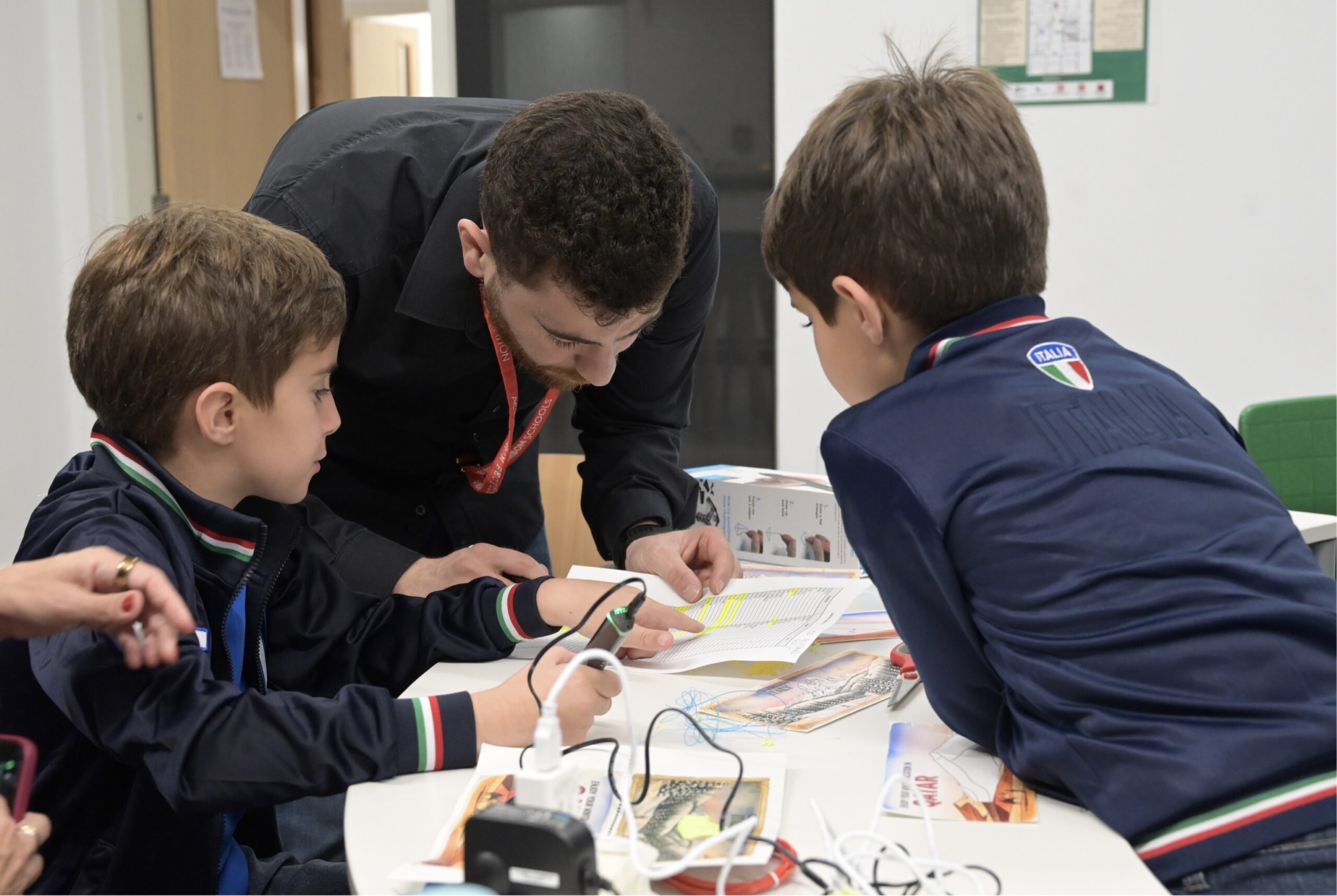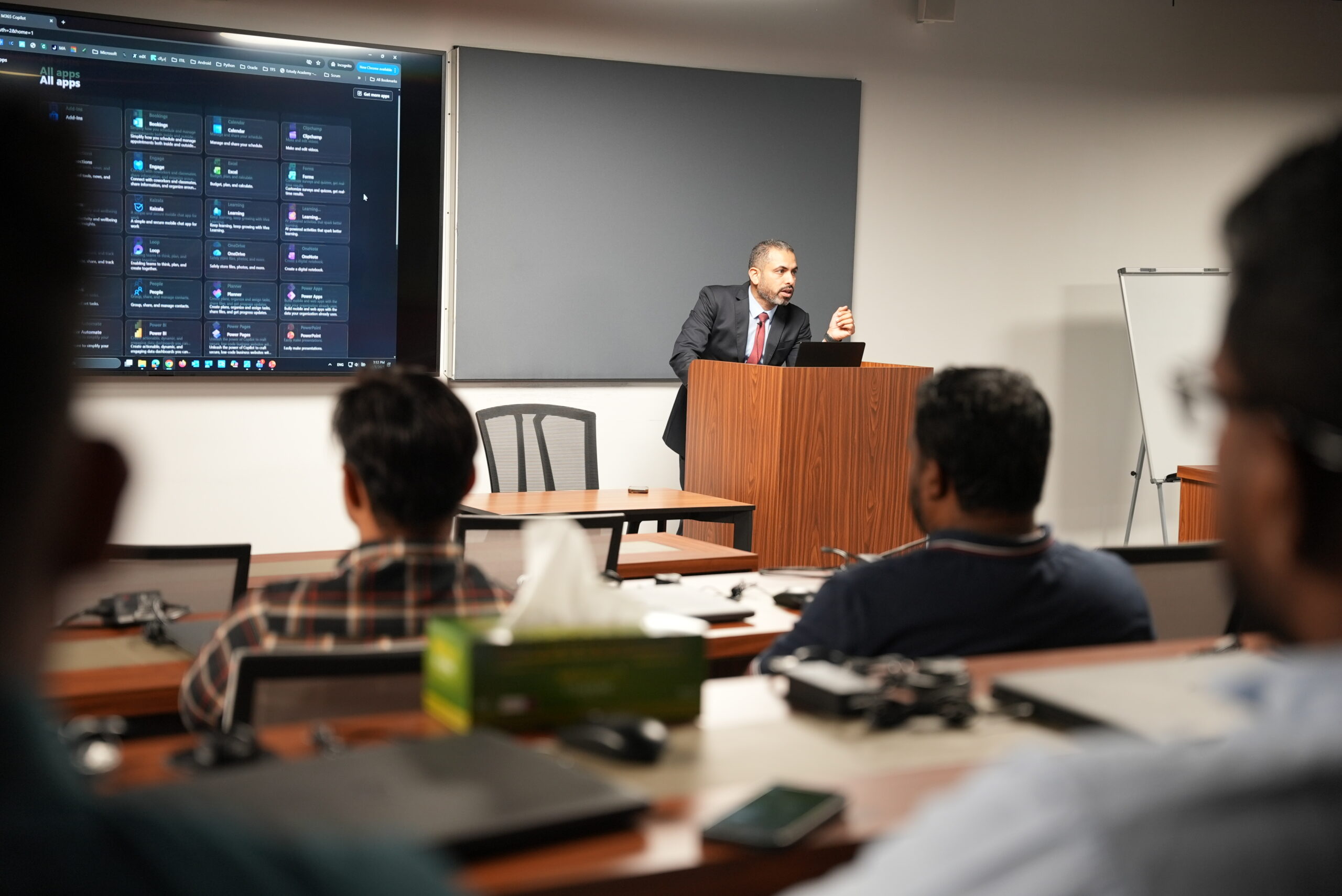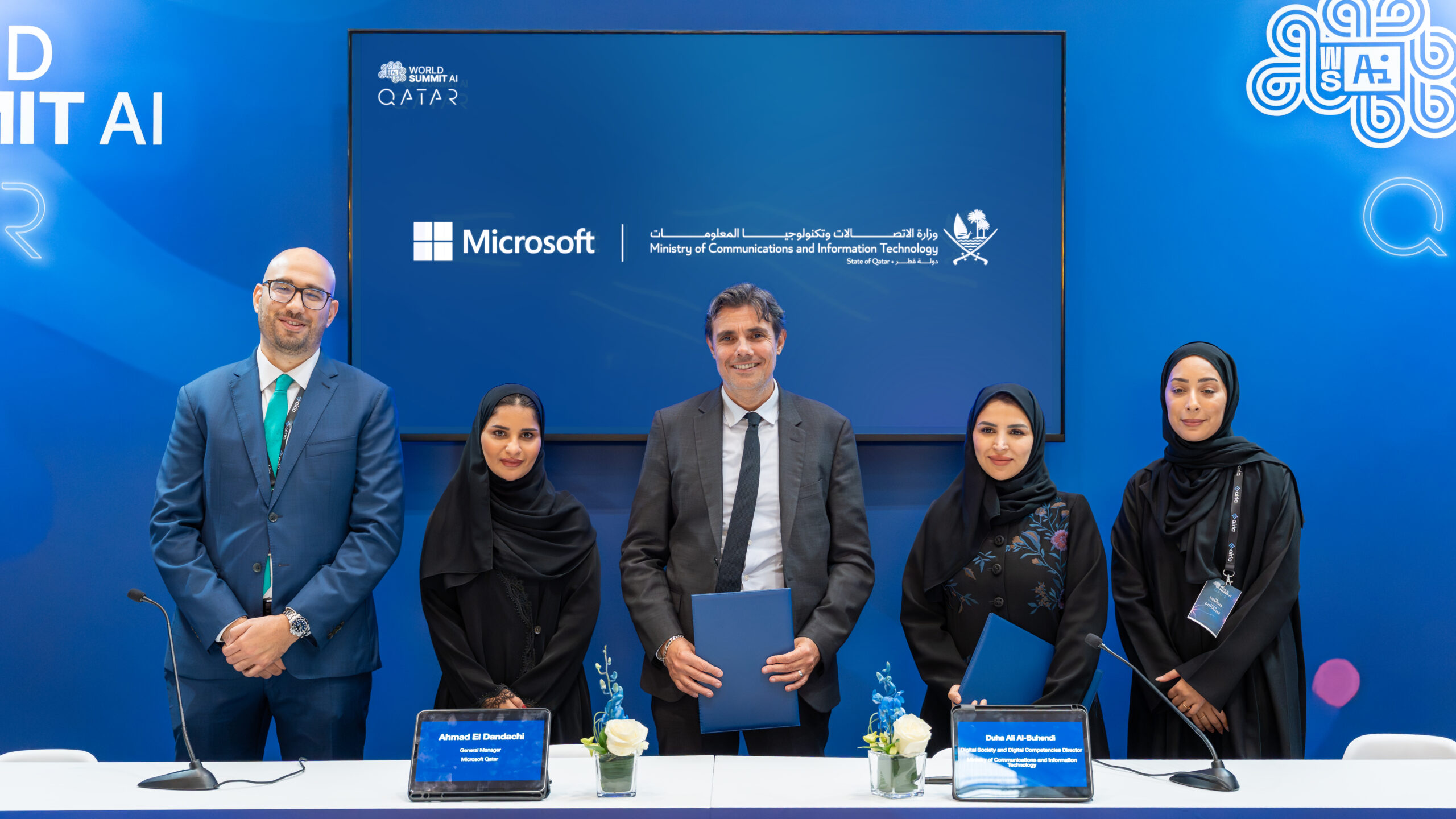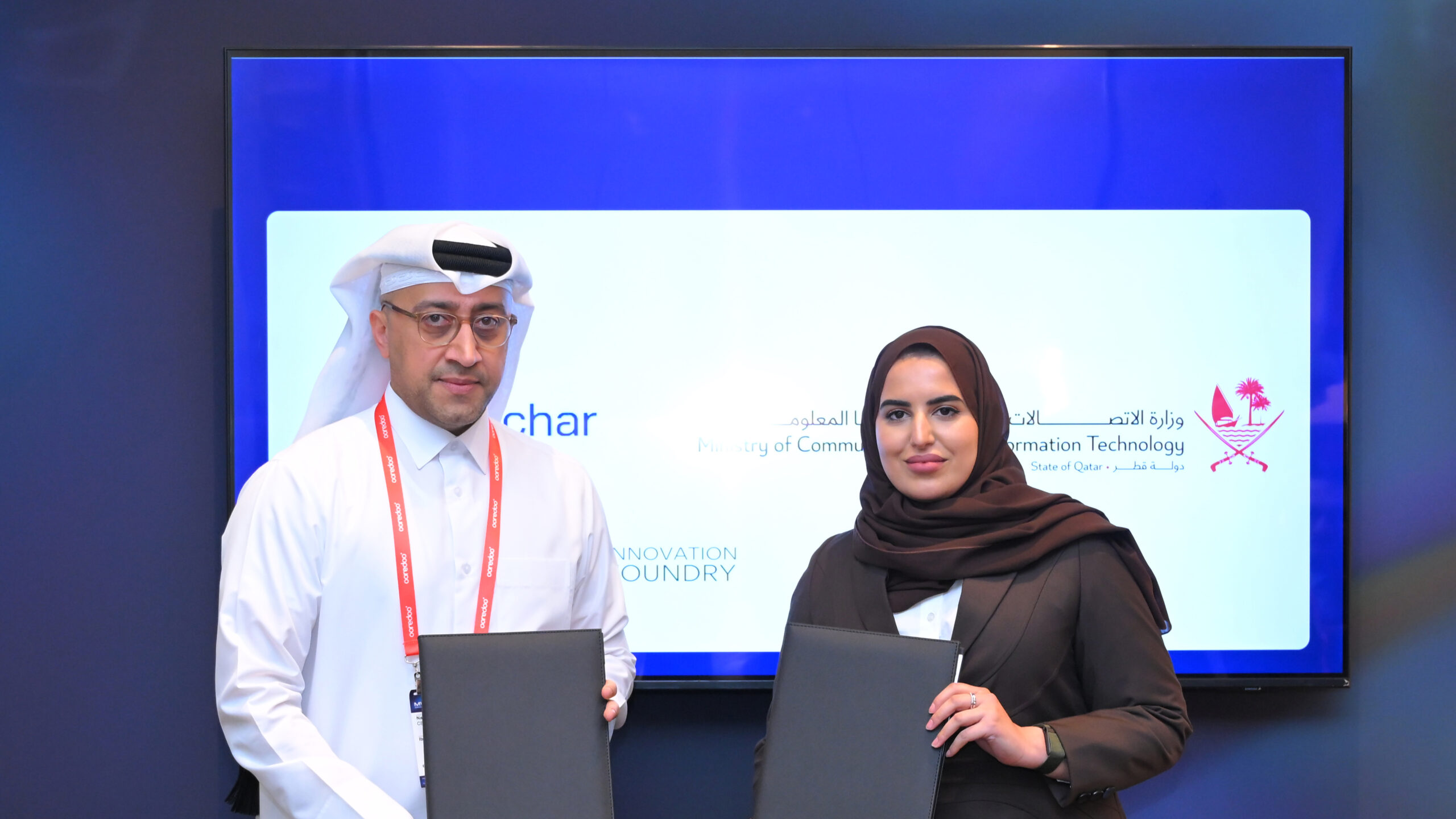- English
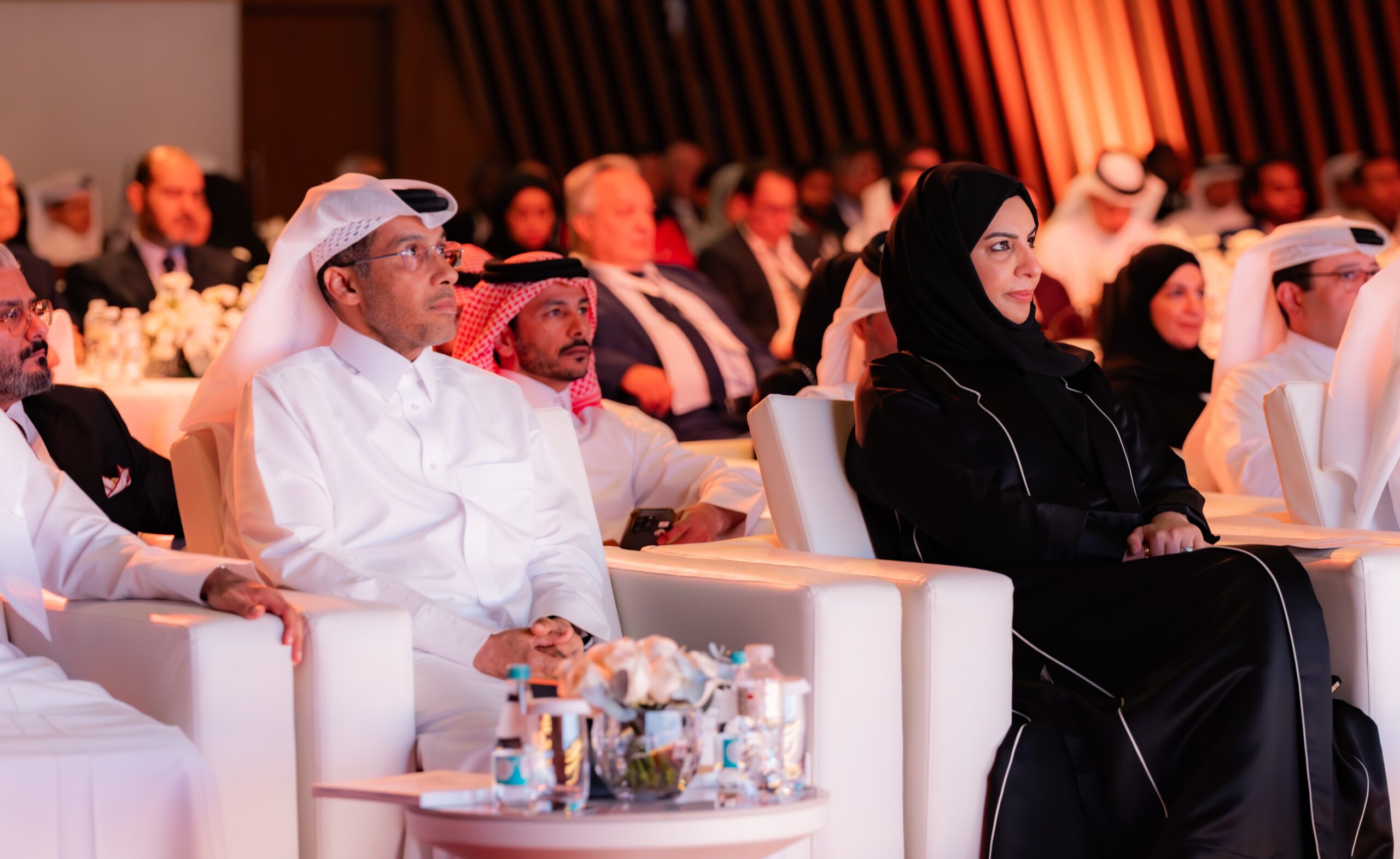
The Ministry of Communications and Information Technology and the Ministry of Environment and Climate Change Announce the Launch of the Hazardous Materials Management Platform
- The platform manages and tracks the lifecycle of hazardous materials, from production or import to their safe disposal or re-export.
- The platform enhances transparency, improves operational efficiency, and accelerates compliance and regulatory processes.
- The platform is implemented under the TASMU Smart Qatar Program of the Ministry of Communications and Information Technology, in collaboration with the Ministry of Environment and Climate Change.
- Implementation of the platform will begin in October 2025, with the platform scheduled to be operational by early 2027.
As part of the national efforts to strengthen environmental safety systems and harness emerging technologies in service of society, The Ministry of Communications and Information Technology (MCIT), in collaboration with the Ministry of Environment and Climate Change (MECC), has announced the launch of the Hazardous Materials Management platform under the TASMU Smart Qatar program. The announcement was introduced during the Chemical Safety Symposium, organized by MECC’s Department of Chemicals and Hazardous Waste, held under the theme “Towards the Effective and Safe Management of Chemicals.”
The launch of the platform reflects Qatar’s commitment to advancing digital transformation and promoting sustainable environmental practices. Its objective is to enhance public safety, strengthen emergency preparedness and streamline licensing and permitting processes through the development of a unified smart platform.
The smart platform aims to deliver an integrated digital system that ensures transparency through comprehensive monitoring and precise tracking of hazardous materials across their lifecycle, in coordination with relevant stakeholders. It will also streamline administrative procedures through centralized compliance frameworks and guidelines. In addition, the platform will provide a unified overview, support the safety of transport infrastructure and contribute to the development of economic and logistics zones.
H.E. Mrs. Reem Al Mansoori, Assistant Undersecretary of Digital Industry Affairs at the Ministry of Communications and Information Technology, said, “The launch of the Hazardous Materials Management platform marks an important strategic partnership between the two ministries, and advances the objectives of the Qatar National Vision 2030. Such initiatives within the TASMU Smart Qatar Program serve as a model of how collaboration among over ten different government stakeholders, combined with digital innovation, can drive sustainable environmental governance, and reinforce Qatar’s leadership in innovating and scaling sustainable digital solutions.”
The platform will involve the participation of more than 10 government entities, aligning monitoring and oversight responsibilities to ensure traceability and supervision of hazardous materials at every stage, from entry into the State, through safe use, to final disposal, protecting the local environment and safeguarding natural resources.
Mr. Yousef Al-Hamer, Assistant Undersecretary for Environmental Affairs at the Ministry of Environment and Climate Change, said, “The safe and transparent management of hazardous materials is vital to protecting our environment and safeguarding the health of our communities. Through this smart platform, we are enhancing oversight, streamlining procedures and aligning with global best practices to ensure that every stage of the hazardous materials lifecycle is managed responsibly. This platform is a strong example of how collaboration and innovation can support Qatar’s sustainability goals and contribute to the preservation of natural resources for future generations.”
The platform adopts a benchmarking methodology to evaluate leading international solutions and build on best global practices. This reflects the pioneering role of the Ministry of Communications and Information Technology and the Ministry of Environment and Climate Change in designing smart solutions that leverage advanced digital applications, including artificial intelligence. This approach enables effective data integration and utilization, laying the foundation for a cutting-edge digital infrastructure that turns Qatar’s vision for public safety and environmental protection into a sustainable reality.
The launch of the Hazardous Materials Management platform reaffirms Qatar’s commitment to building a comprehensive national risk management system and advancing digital innovation as a key enabler for societal protection and sustainable development. Once implemented, this platform is expected to serve as a pioneering regional model, delivering tangible value in environmental protection and natural resource preservation.

